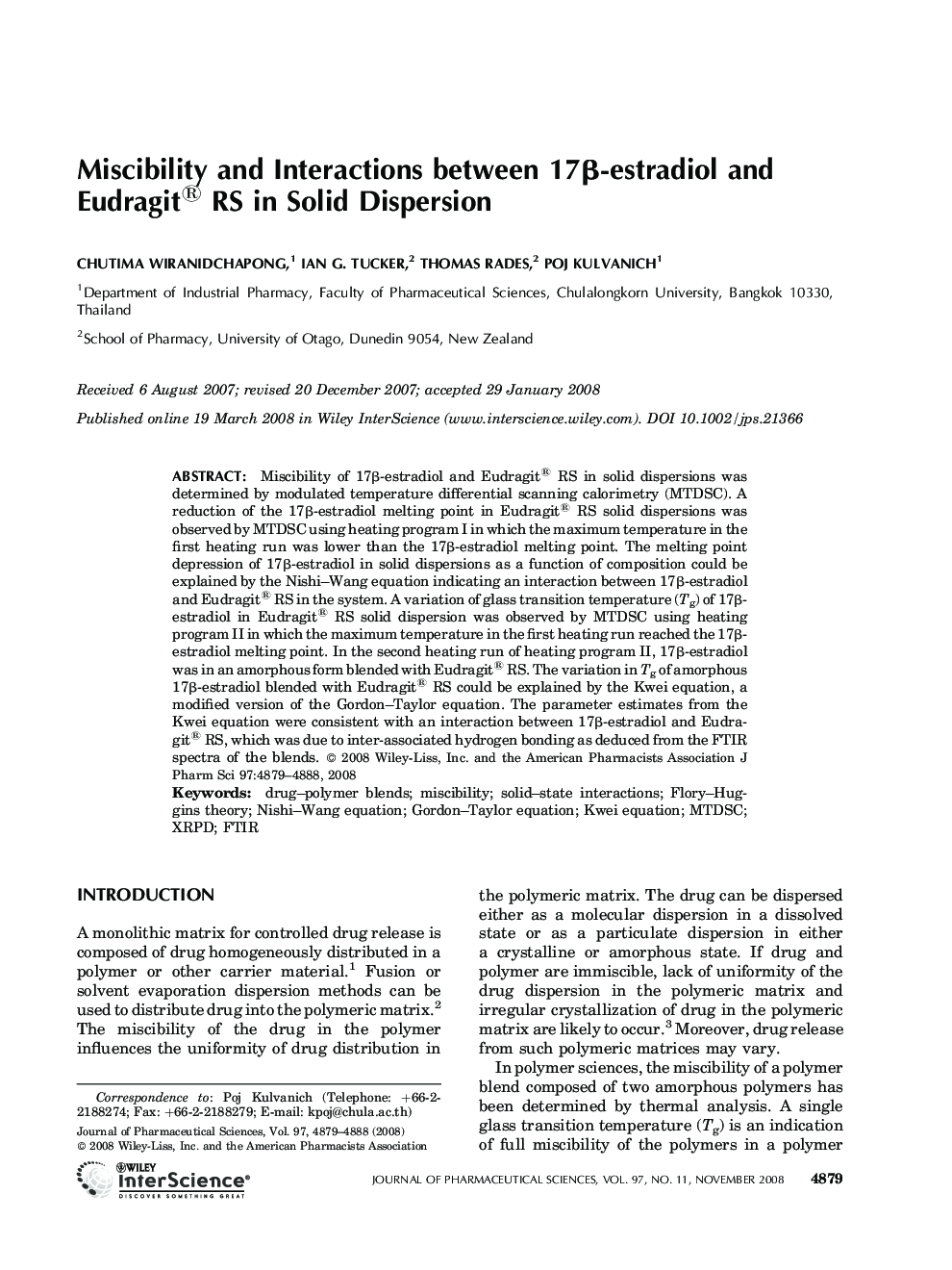| Article ID | Journal | Published Year | Pages | File Type |
|---|---|---|---|---|
| 2487480 | Journal of Pharmaceutical Sciences | 2008 | 10 Pages |
Abstract
Miscibility of 17β-estradiol and Eudragit® RS in solid dispersions was determined by modulated temperature differential scanning calorimetry (MTDSC). A reduction of the 17β-estradiol melting point in Eudragit® RS solid dispersions was observed by MTDSC using heating program I in which the maximum temperature in the first heating run was lower than the 17β-estradiol melting point. The melting point depression of 17β-estradiol in solid dispersions as a function of composition could be explained by the Nishi-Wang equation indicating an interaction between 17β-estradiol and Eudragit® RS in the system. A variation of glass transition temperature (Tg) of 17β-estradiol in Eudragit® RS solid dispersion was observed by MTDSC using heating program II in which the maximum temperature in the first heating run reached the 17β-estradiol melting point. In the second heating run of heating program II, 17β-estradiol was in an amorphous form blended with Eudragit® RS. The variation in Tg of amorphous 17β-estradiol blended with Eudragit® RS could be explained by the Kwei equation, a modified version of the Gordon-Taylor equation. The parameter estimates from the Kwei equation were consistent with an interaction between 17β-estradiol and Eudragit® RS, which was due to inter-associated hydrogen bonding as deduced from the FTIR spectra of the blends.
Related Topics
Health Sciences
Pharmacology, Toxicology and Pharmaceutical Science
Drug Discovery
Authors
Chutima Wiranidchapong, Ian G. Tucker, Thomas Rades, Poj Kulvanich,
